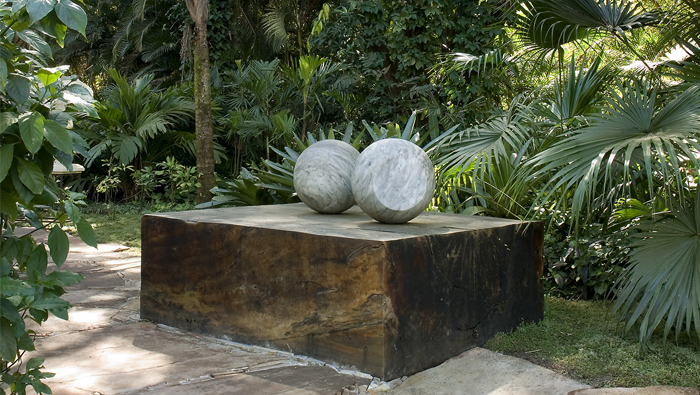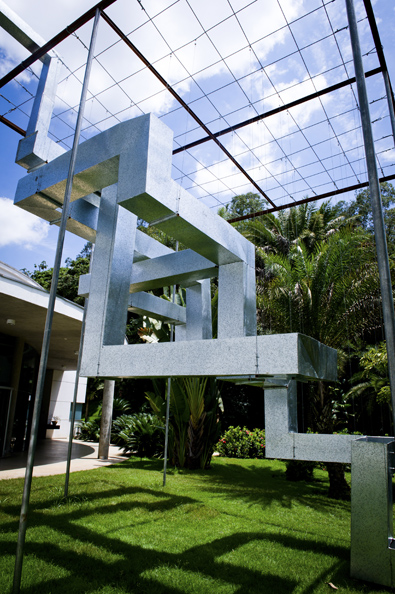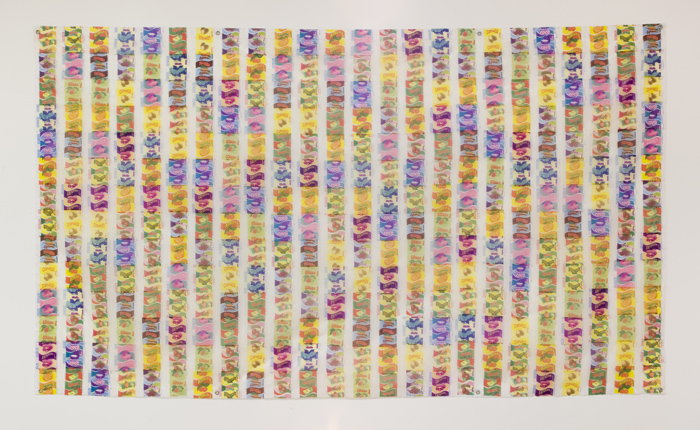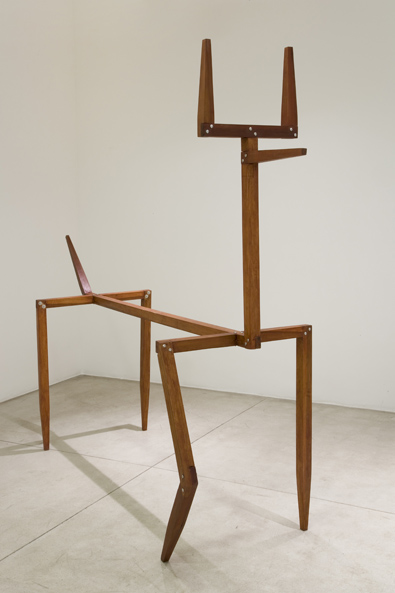The Garden of All Senses
Vision, hearing, taste, touch and smell. These are the five senses we use to relate to and experience the world around us. Inhotim has created the Garden of All Senses as a way to explore these capabilities. Located in the Educational Plant Nursery, it is a space intended to build knowledge through practice as well as through the exchange of information among visitors and the Institutes environmental education team.
The project includes three mandala-shaped flowerbeds, each one dedicated to aromatic, medicinal and toxic plants. In this space, visitors are invited to interact with the species and touch them, observing their specificities and even tasting them.
Stevia (Stevia rebaudiana), used to make a natural sweetener, is among the most interesting plants there, together with the white chamomile (Matricaria recutita), with soothing and anesthetic properties. During the guided tours, we encourage visitors to taste its leaves, which may cause tongue numbness.
Those who visit the garden also find out about the uses of species on display and are able to relate them to practices that have been lost with time, such as the cultivation of medicinal species or the production of vegetable gardens in our own backyards. It is also an opportunity to show appreciation to things learned from past times and traditions of our grandparents.
Opened in June 2011 during the Environment Week, the space has increasingly become important to bring science closer to the general public. The activities and educational actions carried out in this Garden play a key role in raising environmental awareness as well as in biodiversity preservation.
The Garden of All Senses was accomplished through a partnership between the Environmental Education team, the Friends of Inhotim program and institutions specialized in people with visually impairment.
Written by Diego Pimenta, environmental guide at Inhotim.




